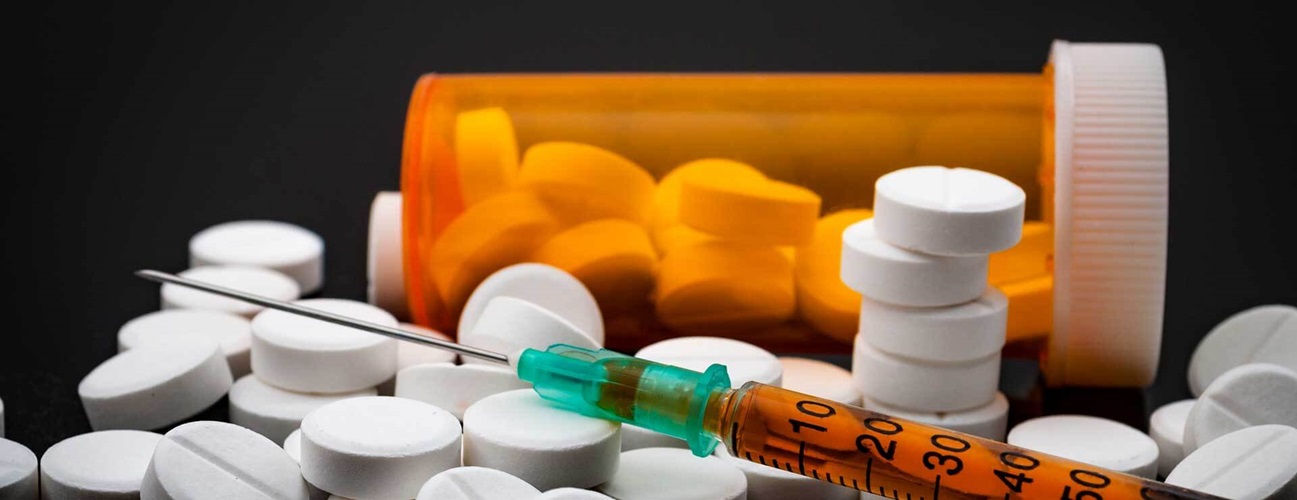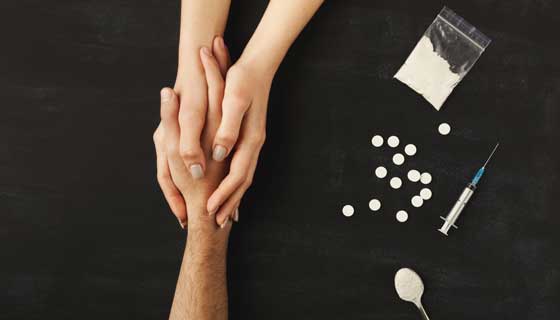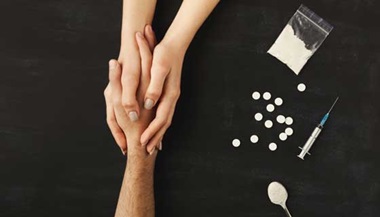Opioids
Opioids are a class of drugs that derive from, or mimic, natural substances found in the opium poppy plant. Opioids work in the brain to produce a variety of effects, including pain relief.
Opioid drugs include prescription pain medicine and illegal drugs. Some people use opioids because of the euphoria (“high”) they can produce. Opioid drugs can cause addiction, also known as opioid use disorder (OUD).
What You Need to Know
- “Opioid” is the proper term, but opioid drugs may also be called opiates, painkillers or narcotics.
- All opioids work similarly: They activate an area of nerve cells in the brain and body called opioid receptors that block pain signals between the brain and the body.
- Examples of opioids include morphine, heroin, codeine, oxycodone, hydrocodone and fentanyl.
- Symptoms of opioid use include drowsiness, constipation, euphoria, nausea, vomiting and slowed breathing.
- A person using opioids over time can develop tolerance, physical dependence and opioid use disorder, with the risk of overdose and death.
Medical Uses of Opioids
Prescription opioids, when legally prescribed by a doctor and used as directed, can relax the body and relieve symptoms of an illness, an injury or a surgical procedure, such as:
- Post-surgical pain
- Severe pain due to trauma or disease
- Coughing
- Diarrhea
Opioids may be given orally, via a skin patch, under the tongue or by injection.
Opioid Safety
Opioid use, even under a doctor’s supervision, can pose risks. Regular use of prescribed medications can increase a person’s tolerance and dependence, requiring higher and more frequent doses.
In addition, opioids can restrict the ability to breathe when taken at a higher dose, and when misused, can lead to a fatal overdose. The risk of respiratory depression (slowing) or respiratory arrest (when breathing stops completely) is higher in people who:
- Are taking an opioid drug for the first time
- Are taking other medications that interact with the opioid
- Have a disease or condition that affects their ability to breathe.
Learn more about opioid use disorder and steps you can take to prevent it.
Facts About Opioid Addiction
Both legally prescribed and illegal opioids may cause euphoria ― a pleasurable sense of well-being ― in some people. Not everyone experiences euphoria when taking opioids, but for those who do, there is a risk of repeatedly using the drug because of the way it makes them feel.
This is why opioid drugs, even those prescribed by a doctor, are very addictive and can lead to opioid use disorder. Using any opioids for their euphoric effect, even for a short time, raises the risk of substance use disorder, overdose and death.
- Nonmedical use of opioids can include swallowing capsules or tablets, inhaling powder (including crushed tablets) through the nose or injecting opioids into a vein with a needle. Using a needle to take opioids nonmedically raises the risk of infection, including hepatitis and HIV.
- About 75% of people in the U.S. who became addicted to street opioids such as heroin during the 2000s report that they started out taking prescription opioid drugs. This trend may be related to availability: In most parts of the United States, fentanyl is cheaper and easier to obtain than prescription opioids.
- A person with opioid use disorder may experience financial difficulties due to the high cost of obtaining drugs illegally, and this may lead to stealing others’ prescription opioid medications, personal belongings or cash. Difficulty with family, interpersonal relationships and other aspects of life can grow worse as the disorder progresses, and the affected person may not be able to stay employed.
- OUD can be both progressive (getting worse over time) and fatal. Opioid overdose deaths are rising in the United States.
Opioid Effects
What happens when a person takes opioids? Some of the effects can include:
- Sleepiness
- Relaxation
- Euphoria
- Nausea
- Vomiting
- Constipation
- Slowed breathing, which can result in hypoxia: a potentially dangerous reduction of oxygen circulating in the body.
Types of Opioids
Some opioid drugs are made from naturally occurring plant compounds (alkaloids) that come from a specific type of poppy plant called an opium poppy.
Other opioid drugs are synthetic, meaning they are human-made substances created in a laboratory. Or, an opioid drug may contain both naturally derived and synthetic ingredients, including other drugs.
What drugs are opioids?
Prescription opioid drugs include:
- Oxycodone
- Oxymorphone
- Hydrocodone
- Hydromorphone
- Fentanyl
- Morphine
- Codeine
- Methadone
- Tramadol
- Buprenorphine
Heroin, an illegal street drug, is also an opioid.
Learn more about prevention, symptoms and treatment for opioid use disorder.






